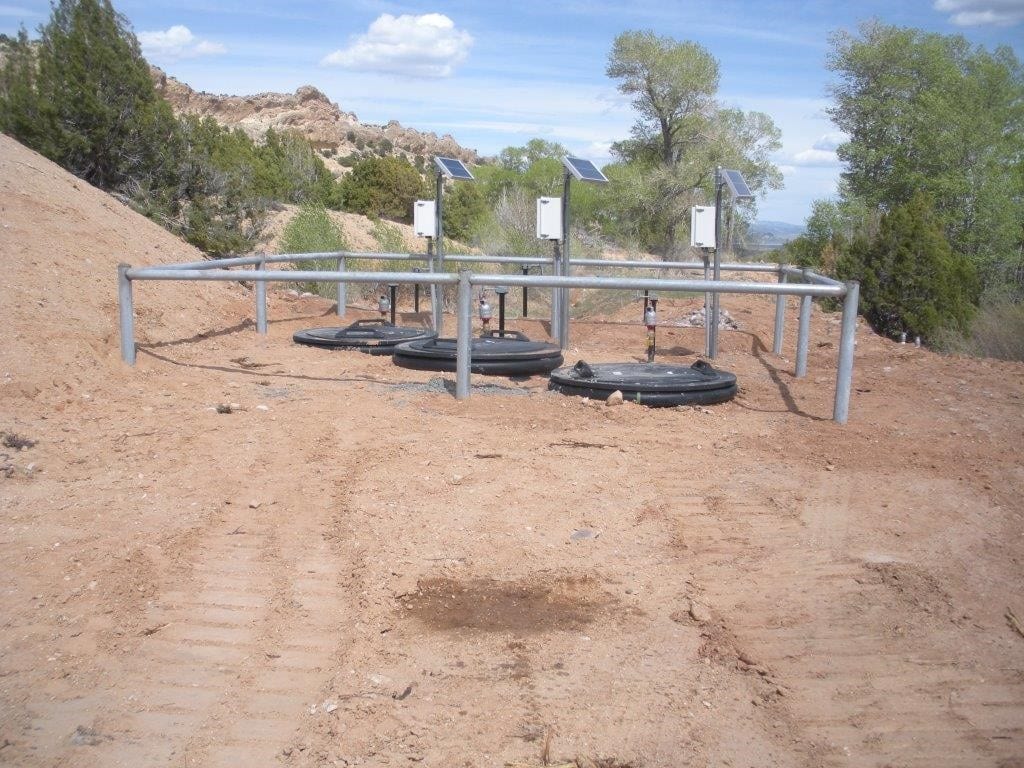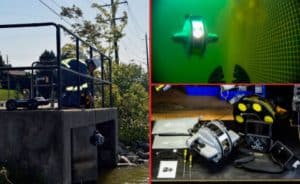Strap-on, Transit-Time Flow Meters for Use in Agriculture Irrigation
Increasingly agriculture water conveyance is moving from open ditches and canals to pipes that transport water for pressurized irrigation systems. With open-channels, primary devices such as flumes and weirs are used to measure water flow. Dataloggers/flow meters use an electronic level sensor to make a water level measurement and the data is automatically put into an equation specific to the type and size of flume or weir in place. To measure flow in a full-pipe you need to simply measure the velocity of the water in the pipe as the area of the pipe (i.e. inside diameter) is a constant (assuming a full pipe).
There are many technologies available for measuring flow in a full pipe. Some examples are: insert sensors with impellors, vortex-shedding sensors, magnetic flow meters, insert doppler-sensors, transit-time technology, etc. There are advantages and disadvantages for each technology depending on a number of factors such as: pipe material, pipe size, cleanliness of the water, water velocity, etc. For example, sensors inserted through the wall of pipe into the liquid can be adversely affected by grass hanging up on the sensor and sediment wearing on the impellor. Doppler sensors rely on particles entrained in the water to make a measurement so if the water is too clean (e.g. sediment falls out behind a dam) they will not perform well. Magnetic flow meters have great accuracy (e.g. 0.25-.5%) and don’t block particles however they can be expensive for large pipes and are more expensive to install on existing pipes.
Strap-on, transit-time flow meters have a number of advantages for irrigation flow measurement. Sensors strap on to the outside of the pipe-wall so they don’t catch any debris and the installation is simple, as the sensors are simply strapped on to the pipe. They provide the right combination of flow accuracy (e.g. 1-2%) and relative low cost. Strap-on meters are an especially economical solution for pipes larger than 15” or for use as a portable meter that can be easily moved from site to site.
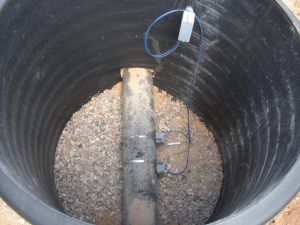
Transit-time meters work on the “time of flight” principle where ultrasonic (high-frequency) sound pulses are transmitted from transducers mounted on the outside of the pipe. The two transducers each operate in a send and receive mode simultaneously sending sound waves one traveling in the direction of flow and the other opposite the direction of flow. In a no-flow environment the travel time of the signal between two transducers is the same. When the pipe is flowing the signal moving with the flow travels faster than the signal moving against the flow and this time differential is used to compute the velocity of the fluid. Volumetric flow rate is calculated by multiplying fluid velocity with the cross-sectional area of the pipe.

Sensors can be mounted on most types of pipe including PVC, HDPE, steel, aluminum, iron, etc. Transit-time meters do not work well on concrete, CMP or Transite (asbestos-cement), and plastic-rubber-lined pipe.
There are generally three different configurations to mount transit-time sensors to the pipe depending on the pipe material and pipe diameter:
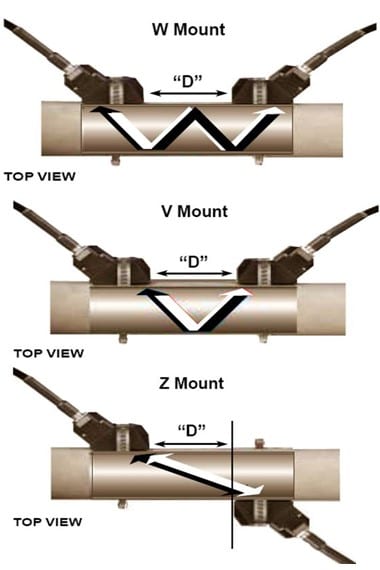
Sensors are mounted to the sides of the pipe with acoustic-coupling compound. The recommended location is generally between 7-11:00/1-5:00 o-clock position to avoid problems with air-entrainment at the top and sediment at the bottom.
The key to accurate pipe flow measurement is having adequate, unobstructed, straight-run lengths of pipe both before and after the installation area. This chart shows the recommended straight run lengths for transit-time meters:
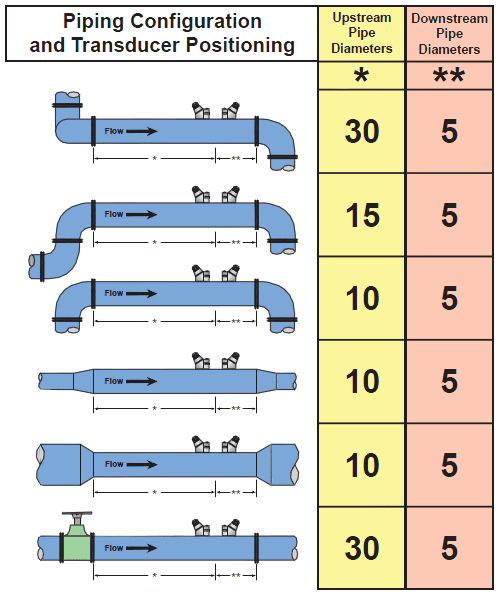
The transit-time flow meter displays both flow rate and totalized flow in user-selected engineering units such as CFS, Acre Feet, etc. For districts with SCADA or telemetry systems in place the meter can output the flowrate via MODBUS or as a flow proportional 4-20 mA signal.
Systems can be installed remotely and operated from a battery and solar panel or via AC power.
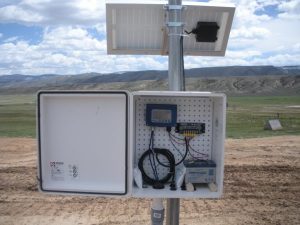
Making data easily available to stakeholders can minimize conflicts and help ensure systems run more efficiently. Smaller entitites can also easily add a datalogger/cellular modem. This modem can arrive already provisioned and with a cellular plan in place, ready to use. With the cellular option flow data can be viewed remotely on any android, iOS or MS Windows device that has internet access. Users can also download data remotely so historical records can be used for billing or water rights assessment.
Frontier Precision can help your district or canal company with open-channel or pipe flow measurement. Additional Frontier Precision water resource products can be viewed here and additional information on ultrasonic, strap-on flow meters is available here.
To schedule an on-site visit or get a price quote, email Steve Combe.





